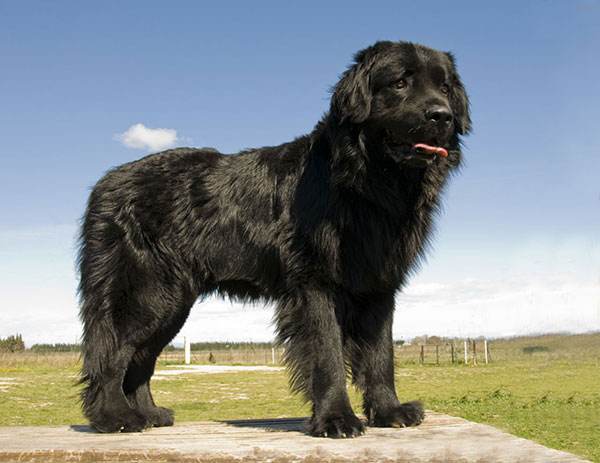Newfoundland
IUCN
LCBasic Information
Scientific classification
- name:Newfoundland
- Scientific Name:Canis lupus familiaris
- Outline:Carnivora
- Family:Canidae
Vital signs
- length:66-71cm
- Weight:45-68kg
- lifetime:7-10 year
Feature
Known as the "Saint Bernard of the Water", he is an expert in water rescue.
Distribution and Habitat
Originated from Canada
Appearance
The head is massive, with a broad skull, prominent occiput, and full cheeks. The eyes are dark brown (brown or grey eyes may be lighter), small, sunken, and set far apart. The eyelids are tight. The ears are small, triangular, and slightly rounded at the tips. The base of the ear reaches to the inner corner of the eye on the same side. The forehead and face are smooth and free of wrinkles. The bridge of the nose is well-defined, and is more pronounced when viewed from the side because of the prominent eyebrows. The muzzle is well-defined, with equal width and depth in front and back. The length and depth of the muzzle are almost the same, with the distance from the bridge of the nose at the tip of the nose shorter than the distance from the bridge of the nose to the occiput. When viewed from the side, the top of the muzzle is straight or slightly arched, with a scissor-like or level bite. The absence of lower incisors does not indicate a malocclusion. The neck is strong and long. The b
Details
The Newfoundland dog was found in the Newfoundland region of northeastern Canada. Some people believe that the Newfoundland dog is a descendant of the Indian wild dog, while others believe that they are closely related to the Canadian Labrador Retriever. It is said that the ancestors have the bloodline of the Great Pyrenees or sled dogs.

Newfoundlands are large dogs, but they are gentle and not dull or irritable. They are not only loyal companions, but also versatile dogs. Sweetness and cuteness are the biggest characteristics of Newfoundlands. Finnish dogs are one of the friendliest breeds of all.
The Newfoundland is huge and very smart. It is generally used to haul fishing nets, pull boats to shore, rescue victims who fall into the water, and also to haul wood, deliver milk and carry goods. It is an excellent water rescue dog. In 1919, a Newfoundland was awarded a gold medal because it pulled a lifeboat to rescue 20 victims to a safe area during a shipwreck. During World War II, Newfoundlands transported supplies and ammunition to the army in Alaska and other places in the harsh climate of blizzards. Today, the safety of water transportation is constantly improving, and the professional instinct of Newfoundlands in water rescue is no longer useful, but people have found that they have been transformed into beautiful, lovely, affectionate and happy companion dogs.
Protect wild animals and stop eating game.
Maintaining ecological balance is everyone's responsibility!








